Avengers: Endgame is the movie event of 2019. A visual tour de force, the film is the pinnacle of what the Marvel Cinematic Universe is all about: sweeping story arcs, epic plot lines, and a heaping serving of emotional payoff with one of the most satisfying conclusions of a film series, all thanks to painstakingly crafted character development over 22 feature-length films.
Don’t worry, I won’t divulge any spoilers; I’ll just say that it delivers on everything you wanted in a conclusion to 11 years of universe building.
But then again it kind of doesn’t. Once the emotional rollercoaster has subsided and enough time has passed for the dazzling special effects to fade, you might start to pick it apart and realize that it is also kind of messy in a lot of ways, both in terms of story and as a visual spectacle.
Certain plot elements feel like softballs to get past some of the corners the plot was painted into, and some scenes, while mesmerizing, are so intense that the action actually fades to static and you zone out a little.
But, alas, that is the reality of a hyper-complex universe with not just dozens but hundreds of moving elements that all needed to be squished together into a somewhat cohesive narrative that explains as much as possible and allows continuation where applicable.
Not everything can be perfect, and it’s understandable that doing something so epic that hasn’t ever been done before might get a little overcomplicated.
Don’t get me wrong, the film definitely delivers satisfaction. But I know that if Marvel were to go back over it with the intent of tightening up the narrative and clearing some visual noise, it could actually be in the running for best Marvel film of the entire MCU (which is generally considered to be Black Panther in many lists, with Avengers: Endgame usually somewhere in the top six).

Genus GNS1.2 on the wrist of its creator, Sébastien Billières
This reminds me of a brand-new watch (and watch brand) that has me astounded and excited as it might be one of my favorites for 2019 and a new addition to my top ten favorite watches of all time. That watch is the Genus GNS1.2, an absolutely stunning mechanical creation that comes from Sébastien Billières, a genius watchmaker behind a variety of great watches for the past 20 years.
The Genus GNS1.2 mirrors how I feel about Avengers: Endgame as it also is a tour de force with a whopping dose of zealous love and excitement mixed with a spoonful of concerns that I am interested to see if the next versions address.
Before I go any further, I do want to reiterate that I fundamentally love this watch. Every single thing about the construction, the mechanics, and the plethora of artistic details added throughout the movement has continued to make me geek out about the GNS1.2 since I first saw photos weeks ago. So while I do have a few issues with it, my overall assessment is that it is still top of the charts.
Genus GNS1.2: complex mechanical masterpiece
The Genus GNS1.2 is a complex masterpiece of mechanics, so let’s run through exactly what is going on and then dig into the many details found throughout the watch.
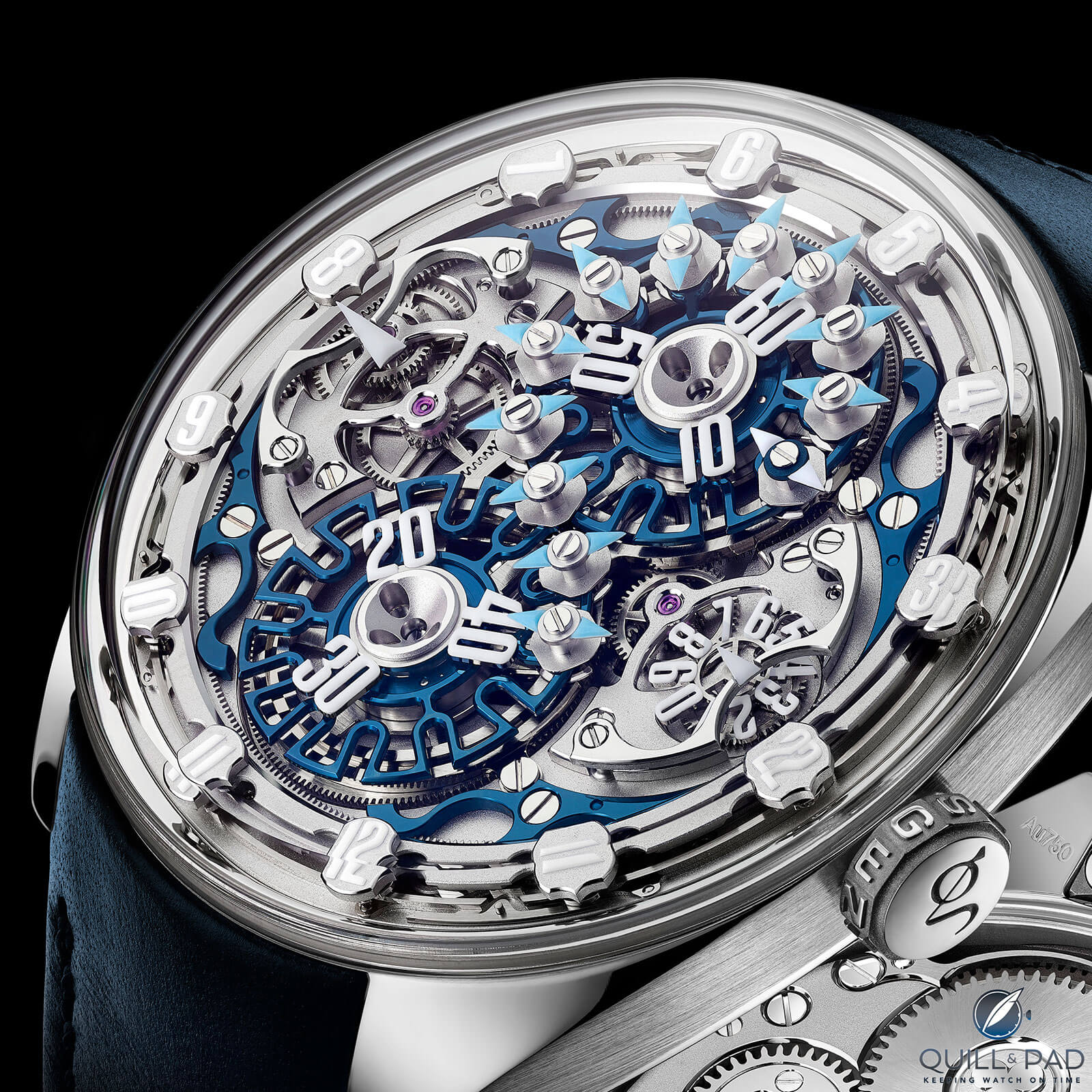
Genus GNS1.2 dial side
It all begins with reading the time, which is centered on three distinct time indications, two of which are related to the minutes. On the outside edge of the display we find the hours slowly wandering clockwise over the course of 12 hours. The numerals rotate a quarter turn four times during one revolution of the movement, ensuring they are always visually upright during their journey.
On the left side of the movement is a lumed arrow indication to show the current position of the hours. Each numeral has a small pointer machined into the shape that corresponds for precise alignment at the top of the hour.
In the center of the movement is the highlight of the watch: a set of two counting drive wheels (my term) that have receiving slots for the 12 lume-coated “Genera” modules that create a figure-eight path as they are driven around the two wheels.
The lead traveling indicator module, named the “Genus” (of which the plural Genera is derived), is used to indicate the tens of minutes during the hour while the trailing modules are there for visual effect. This display provides a lot of motion but not a precise display of the time, so the final indication on the right of the movement tracks the individual minutes.
Using a precision-cut “disk” element, the lume-coated numbers 0 through 9 appear to float, rotating underneath a small bridge that holds the luminous precise minute indicator arrow. In this way the time is officially read from left to right across the three indications or separately if only one is needed.
Due to the design of the mechanism (which I will cover in a bit) the time can be set forward or backward, making the movement very robust when it comes to user manipulation, something that many jumping mechanisms or novel displays often cannot do.
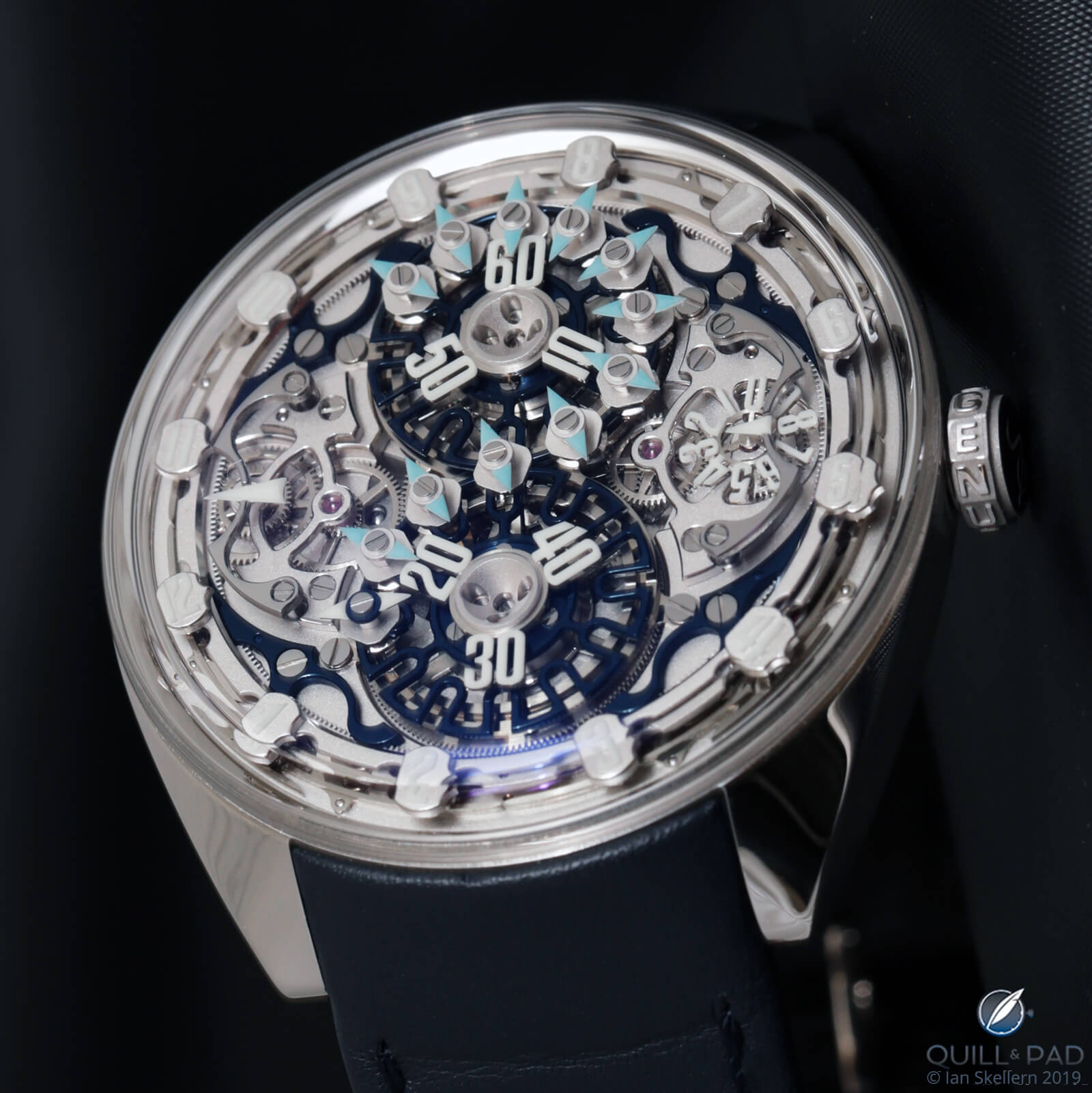
Genus GNS1.2
And with only those three indications, we move on to the truly interesting details of exactly how the GNS1.2 works, all the awesomeness of its construction, and finish up with some of my considerations after spending time pouring over its secrets.
Genus GNS1.2: functions of time
The Genus GNS1.2 is, at its core, based on a rather straightforward mechanical concept: the chain conveyor, which relies on a chain (or set of chains) that are driven by a toothed sprocket. It allows the precisely timed movement of an object down the conveyor since the chain is made of links that create distinct positions along it.
Many chain conveyors will have a driver or receiver attachment on the chain, which meshes with whatever is being moved along the conveyor. This creates perfectly timed, consistent travel along a predetermined path.
The biggest difference is that the GNS1.2 doesn’t use any chain (no, really), rather it utilizes the conveyor belt concept in a way that is almost completely removed from the original designs of any chain conveyor.
Both the hour and the tens of minutes indications function on a similar principle but clearly have very different results in implementation. Let’s look at the hour indication first as it is a good primer for the tens of minutes mechanism.
The hour indication uses an internal ring gear (driven by a going train) that supports the hour numerals on its periphery as it rotates but allows them to spin freely (likely thanks to a jewel bearing or something similar).
This ring gear functionally replaces the chain in a chain conveyor but acts in a similar way. The hour numerals each have what I would call a foot with two perpendicular grooves or a set of four pins that rides along a monorail track, keeping it in a specific orientation in relation to the track.
As the numerals rotate around the movement, every 90 degrees (at 1:30, 4:30, 7:30, and 10:30) they reach a rotation point where they make a quarter turn. Above the foot riding on the track is a four-position Geneva wheel that interacts with a pin just offset from the monorail track to rotate the numeral counterclockwise.
This corresponds to a gap in the track and a hump to guide the foot as it turns, locking the numeral in its new position as it slides over the track. The ring gear moves the numerals around the track as if it were a chain, keeping the numeral timed properly yet allowing freedom to move (in this case rotate) in relation to its “position on the chain.”
Genus GNS1.2: further simple complexity
This design is related to the tens of minutes display but the application is a bit different. First, each of the traveling indicator modules is independent from one another, similar to the hours, and not linked as a chain.
The Genus “links” are distinct modules, each traveling independently along a figure-eight track. You could remove any module and the rest would continue on as normal.
The two counting drive wheels have slots that act as receivers for the modules and help guide and push them as they slide along an internal grooved track underneath. This track has specific geometry where the wheels meet that helps direct an elongated guide foot into the opposite circular path instead of continuing on the same axis of rotation.
As the module returns to the crossover point, the guide foot is angled in the direction of the opposite wheel and thus is directed via geometry to transfer over. You can see this via the angle of the double arrow indicator on the module, which is angled one way or the other depending on which wheel it is traveling in.
With a precisely machined internal groove track and the guide foot, there needs to be no rigid connection to the counting drive wheel as it simply acts as a gentle guide.
The modules feature a pair of retaining shoulders above and below the counting drive wheels to keep them in the groove as the foot has no retaining features of its own. The principle driving this display is a fairly old mechanism design that has been used successfully in automation and manufacturing for a long time, yet never before has it been miniaturized in such an impressive and dazzling way.
And that actually concludes any of the truly unique mechanics as the precise minutes display is simply created by a gear wheel that rotates six times an hour to indicate the exact minute.
At the rear of the case you find a much more traditional movement than the dial-side displays suggest. The in-house Caliber GNS1.2 movement is finished to impeccable standards, almost making you forget just how complex the front is.
Genus GNS1.2: so much incredibleness
And this is where we begin to discuss all the little architectural details that make this piece so incredible and yet leave me calling for a touch of restraint.
When you look at the front of the movement, since there is no functional dial to speak of, you see a smorgasbord of micro design choices. All of the wheels are carefully skeletonized and have fully hand-beveled and -polished edges.
All of the bridges are shaped to maximize the view of the underlying mechanics. The lead Genus indicator module has a small blued-steel indicator upper with white lumed arrows, while the trailing eleven Genera share blue luminous arrows on white gold indicator uppers to help identify the leader of the pack.
There is very strong symmetry on the front of the movement resulting in a quite uniform presentation. The blued-steel guides that hold down and align the hours’ internal ring gear are uniquely shaped and given a perfect black polish and beveling before bluing.
Every single component is finished perfectly, very possibly to Geneva Seal standards with black polishing, satin graining, brushing, straight graining, anglage, and a perfect color consistency across every component that can sometimes be lost with côtes de Genève or other techniques.
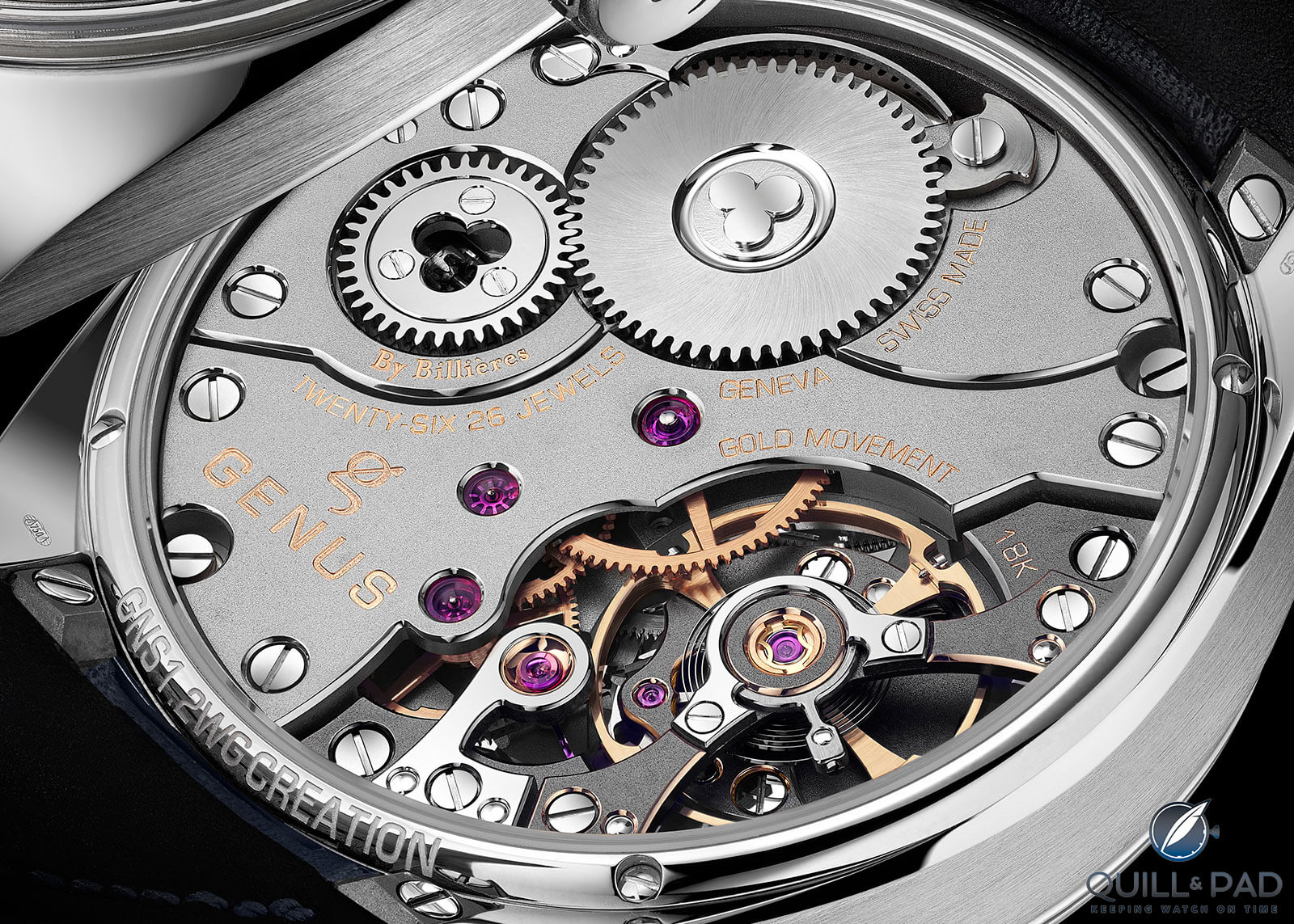
Genus Caliber GNS1.2
The rear of the movement continues this theme with extensive finishing and a lot of micro design choices repeated throughout the movement. Every part is again perfectly finished, and some are very uniquely considered in their shape.
The click is functional yet unique, and the winding mechanism is a sleeper. One wheel features a raised tri-lobe design while the other has a tri-lobe cutout in its center that allows a window into the keyless works as a special surprise. This is the first time I have seen something so minor that offers such a powerful aesthetic impact once noticed.
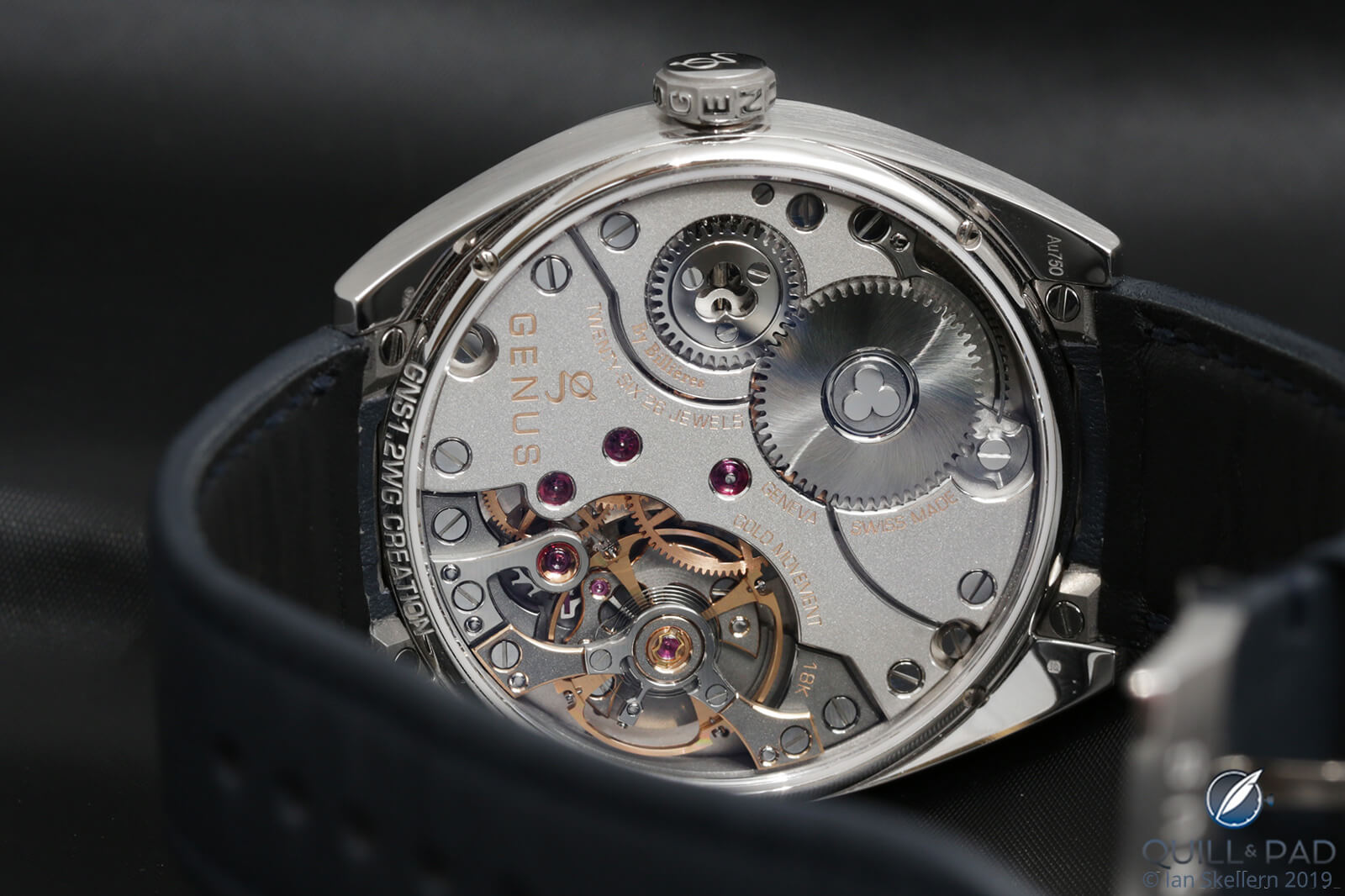
Back of the Genus GNS1.2
The minor details continue: as you look at the going train wheels on the rear you see that they are not simply crossed out but the rim is also notched, adding a huge amount of work and complexity for finishing.
The escape wheel gets its own cock, which is less common considering it is so small, and it is beautifully black polished with a unique shape, beveled and polished edges, and a gold chaton for the pivot jewel.
Components aren’t just made functional but instead demonstrate purposeful design decisions, even down to the plate that secures the regulating body on the balance bridge with its horseshoe shape and notched corners, all perfectly beveled and black polished to perfection.
The crown, like on most watches, features the brand’s logo machined into its surface, but it also uses its faceted edges as a place to spell out the name with embossed letters twice around its circumference.
Truly it doesn’t seem like any aspect of the GNS1.2 has been left in a default, plain state.
Genus GNS1.2: too much incredibleness?
The only real exception is the case, which is the most subdued of everything as it takes the style of a vintage slab tonneau reminiscent of old Seiko cases from the 1970s. This combines with a very large box sapphire crystal right to the edge of the case to focus all the attention on the spectacular mechanics on display.
The result is amazing. It also is a bit of aesthetic static.
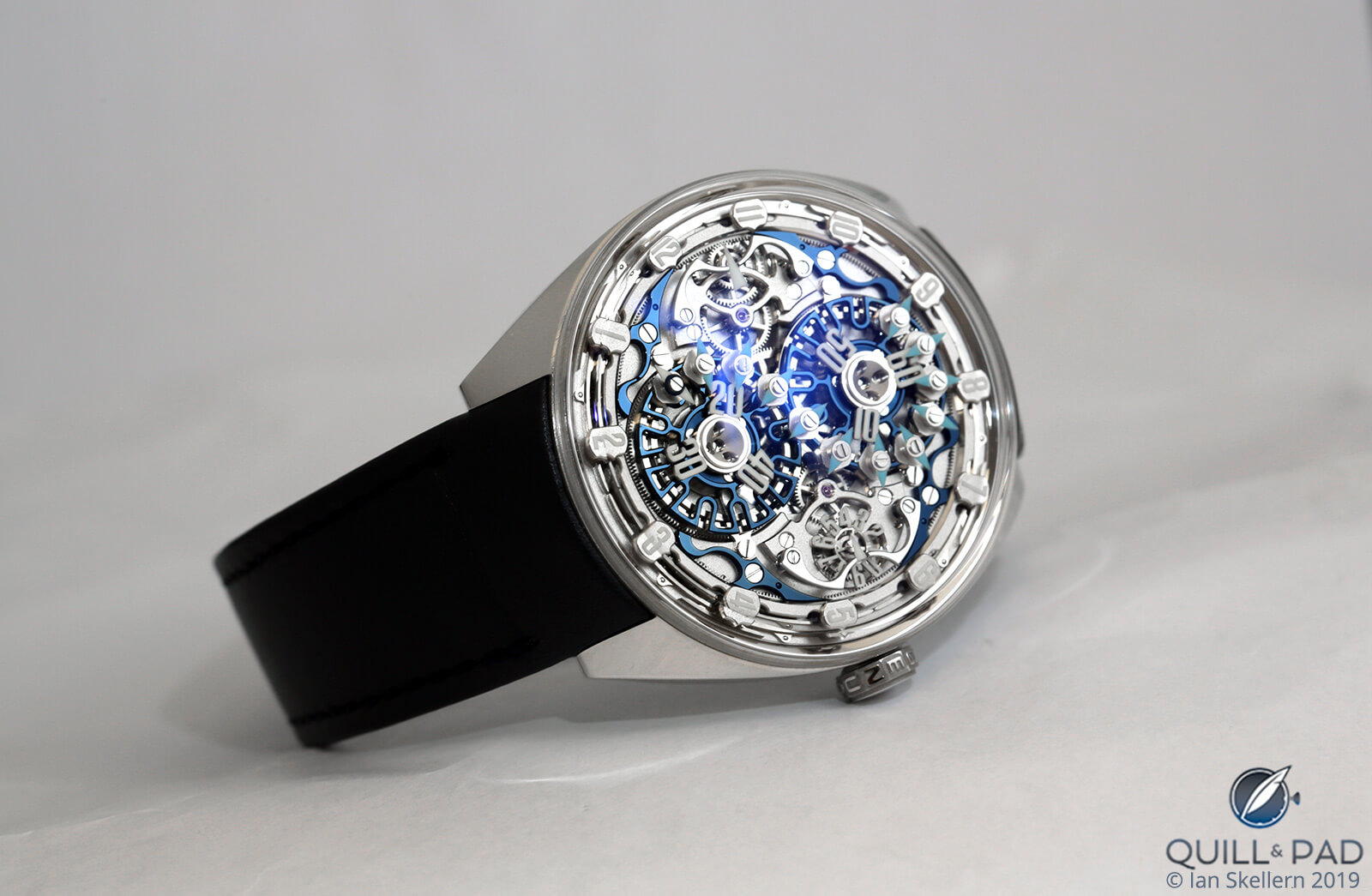
Genus GNS1.2 by Sébastien Billières
The complex mechanics and unique display were developed with such scrutiny and drive to make every single component as great as it could be that to me it seems somewhere along the way the designers forgot to consider the watch itself.
The tens of minutes display is incredible and uber-smooth in operation, but it is fundamentally a confusing display because there are 11 additional arrows pointing to nothing in particular as they play no part in indicating the time.
I have to wonder whether at any point someone asked if the 11 Genera following the lead Genus indicator should be aesthetically different and less substantial? I understand that when fully encompassing one of the counting drive wheels it looks like a rosette, but that seems like a minor visual addition when it makes reading the tens of minutes very confusing.
The modules could have even simply had a luminescent rectangle of a smaller size making the display much more legible.
What’s more, the fact that there are always 12 indicator arrows pointing outward from the center adds to the visual confusion. It seems like a small cover plate could have been added to the exterior of the wheels to hide one side of the indicators and provide a more reasoned display.
That alone could actually have emphasized the figure-eight motif that was the inspiration in the first place.
And since every single component is skeletonized in some way, and there are so many moving components, the combination of everything with a lack of any obscuring dial or covers actually draws attention away from all the cool components and makes the focus the larger confusing whole.
This is where aesthetic restraint would have come in handy instead of the desire to show off everything all at once; focus could have been selectively chosen for specific elements. Many components could have been coated black, for example, to subdue details.
The retaining plates for the internal ring gear seem to have no functional reason to be so complicated and could therefore be another point of simplification. The precise minutes could only be visible in a window, and the gear trains leading to both the precise minutes and wandering hours could have been hidden or subdued.
There are so many amazing elements but not every element deserves equal attention aesthetically, and many could be taken down a notch to let the heroes shine.
Clearly the counting driving wheels are the stars so let them be the complex detail that is visible. I know that is why they are blued steel, but with so many edges, skeletonized shapes, and indicating modules the visual movement becomes overwhelming and the shining elements actually fade to static.
The GNS1.2 feels like the limited edition version that comes out a year after the launch version outfitted with a nice clean dial that showcases the mechanics without being too flashy.
I love it, and the mechanics are awesome, but it does feel like a final arms-length review of how the watch looked may have never happened in earnest.
I get that after developing an idea for years you want to show it off, but oftentimes the best work can be overshadowed by the places where people became too tied to showing everything without realizing that less is very often more.
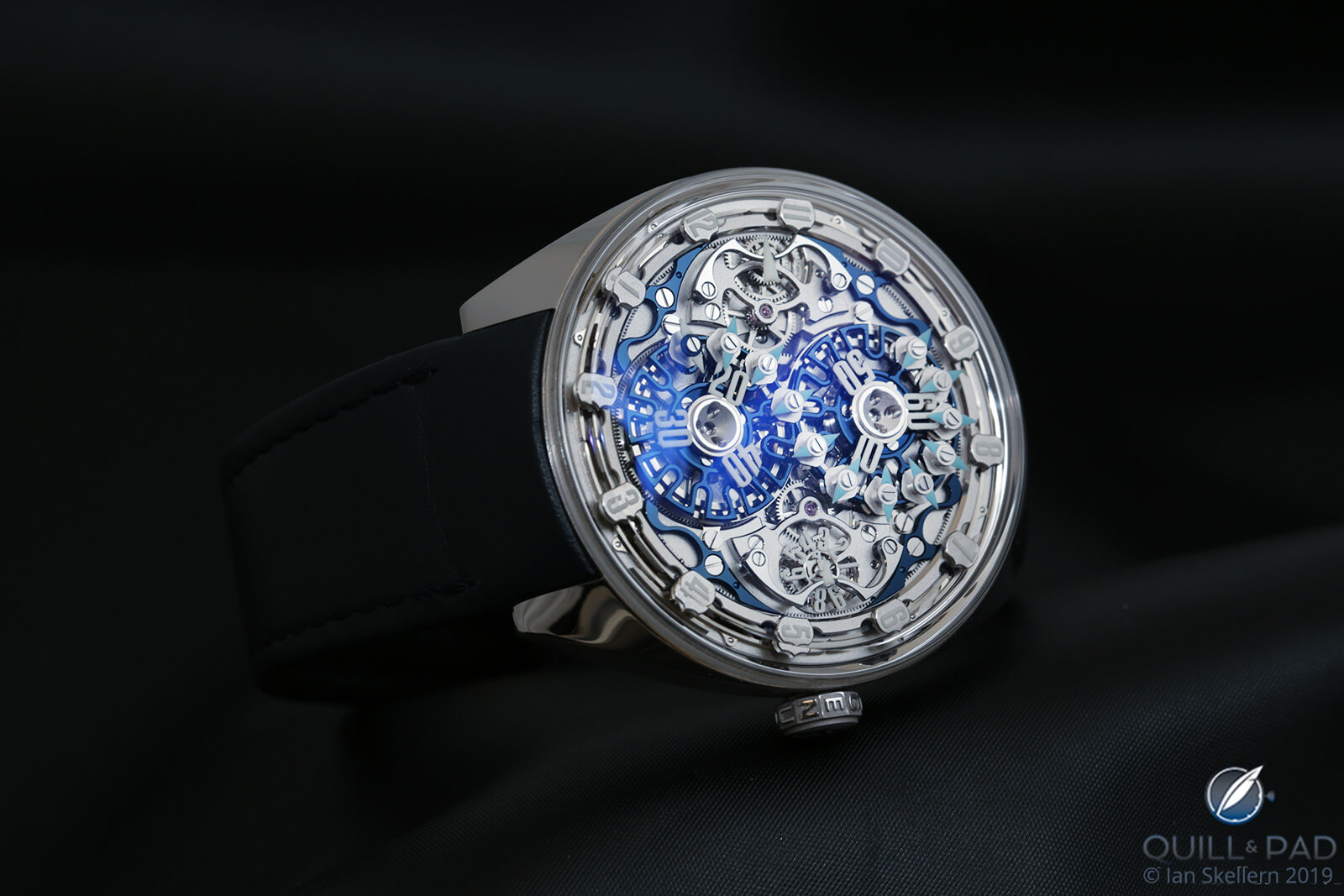
Genus GNS1.2
That being said, this watch viscerally excites me. Everything about it makes me want to pore over the details and understand the ins and outs of how it’s made. I’m fairly confident future versions will take the aesthetic in other directions, so I can rest assured that an equally great but more visually considered option will come.
It’s to be expected as the GNS1.2’s creator, Sébastien Billières, has worked for greats such as Roger Dubuis, Urwerk (he was actually the first watchmaker Felix Baumgartner hired), Harry Winston (he assembled a majority of the Opus 5 watches), and later founded multiple watchmaking companies and developed curriculums for the Foundation for Adult Education in Geneva on Modular Training in Watchmaking and Training in Industrial Quality.
His history proves he knows very well what he is doing, and therefore I surmise more will definitely be on the way.
Perhaps Billières already has plans for things I’ve mentioned and I’m not saying anything he doesn’t already know. Perhaps he doesn’t and thinks these ideas are great and will hire me as a watch designer (cough, cough . . . only partially kidding).

Genus GNS1.2 front and back
Either way, I think this watch and the movement inside is poised to make a big splash. And if Genus gains momentum, the likes of Urwerk, Hautlence, MB&F, De Bethune, and Greubel Forsey will have a new independent pal. I’m sure they are already friends anyway.
Sound off below and tell me what you think of my assessment of the Genus GNS1.2. In my opinion it is truly incredible and deserves attention. I look forward to the future developments from this fledgling brand!
- Wowza Factor * 10 If this watch does one thing, it completely knocks your socks off!
- Late Night Lust Appeal * 110» 1,078.731m/s2 Way more than enough lust to keep you up for days!
- M.G.R. * 71.8 This one gets a nearly perfect score thanks to the incredible assembly of clever ideas and perfect execution!
- Added-Functionitis * N/A Who would have guessed one of my favorite new pieces would be time-only but incredibly complex? I definitely see a pattern, and yet there isn’t any need for Gotta-HAVE-That cream even though this watch screams “complex”!
- Ouch Outline * 13 Running across a field of Legos! Seriously, even if I have some legibility concerns, this watch would be a shining star in any collection. The mechanics alone make enduring the worst pain imaginable to parents totally worth it!
- Mermaid Moment * Instantaneous, then two days, then instantaneous, then another day! The excitement wears off and you realize things aren’t as perfect as you once thought, but then you get excited all over again and the cycle continues. Either way you end up excited and start pouring over the guest list!
- Awesome Total * 1,152 First take the number of Genera modules (12) and multiply them by the number of positions within the two drive wheels (24), next multiply the result by the number in the limited edition (8) and finally divide that result by the number of counting drive wheels (2) and the result will be a seriously huge awesome total!
For more information, please visit www.genuswatches.swiss.
Quick Facts Genus GNS1.2
Case: 43 x 13.1 mm, white gold
Movement: manually-winding Caliber GNS1.2
Functions: hours, tens of minutes, precise minutes
Limitation: 8 pieces in white gold
Price: CHF 288,500
You may also enjoy:
Philippe Dufour Explains The Goals Of Time Aeon And Oscillon (Video)








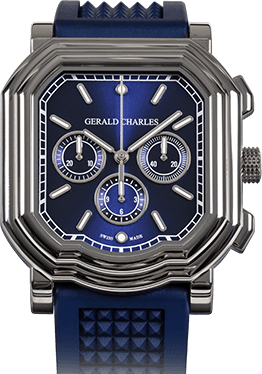
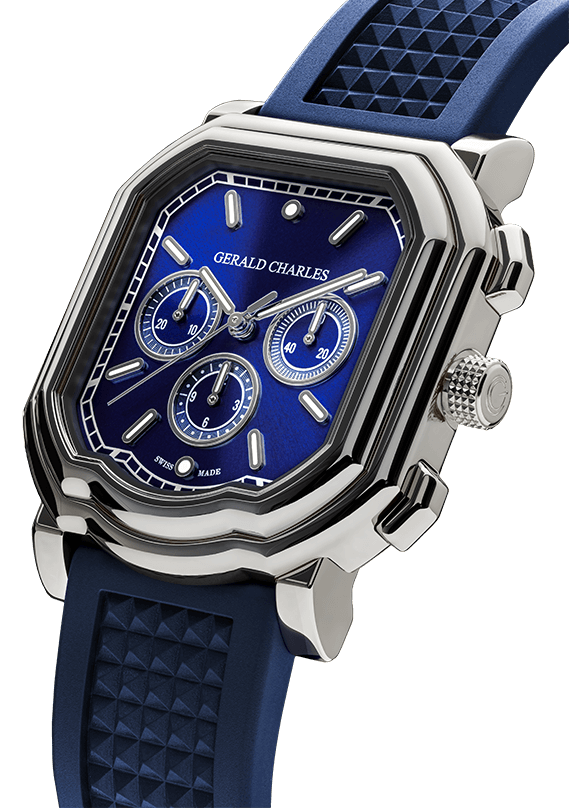








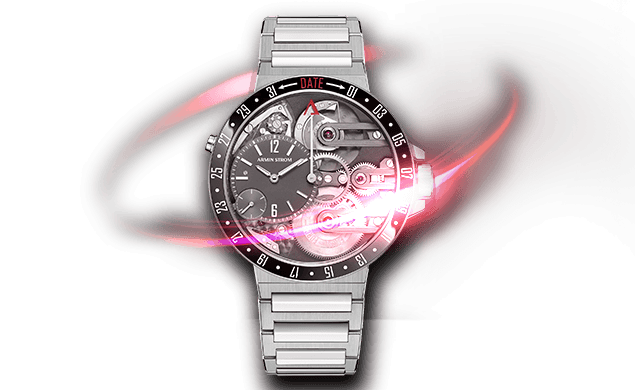
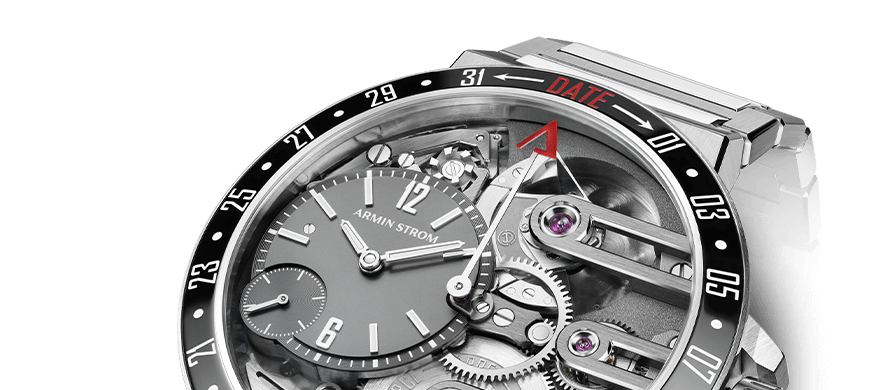
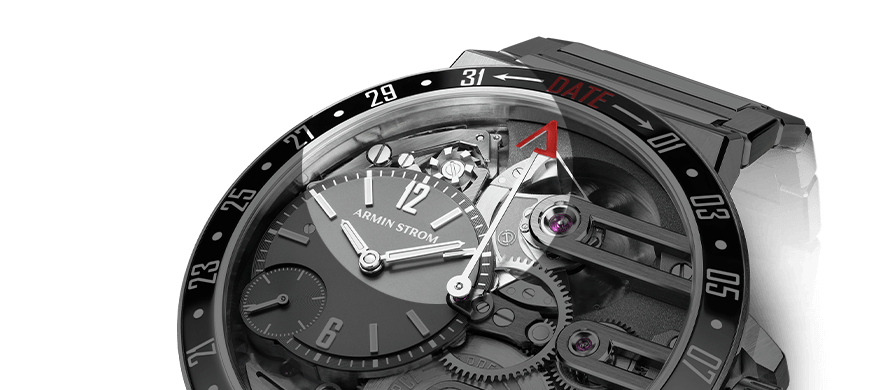


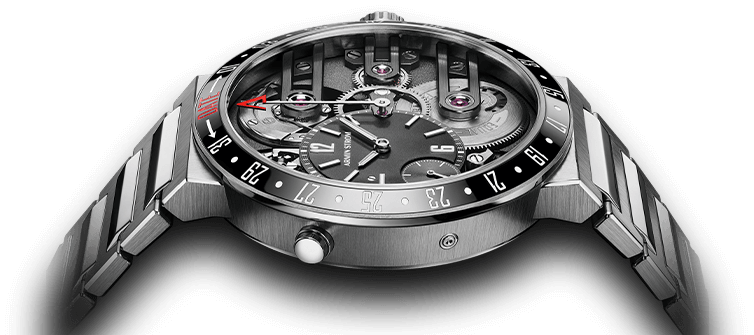
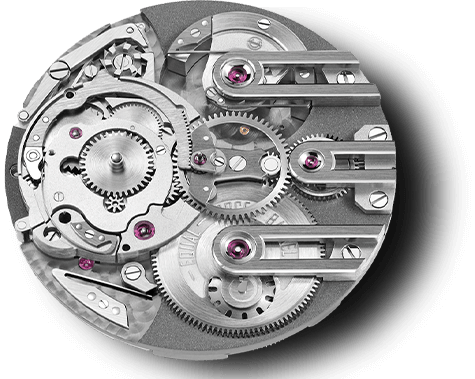







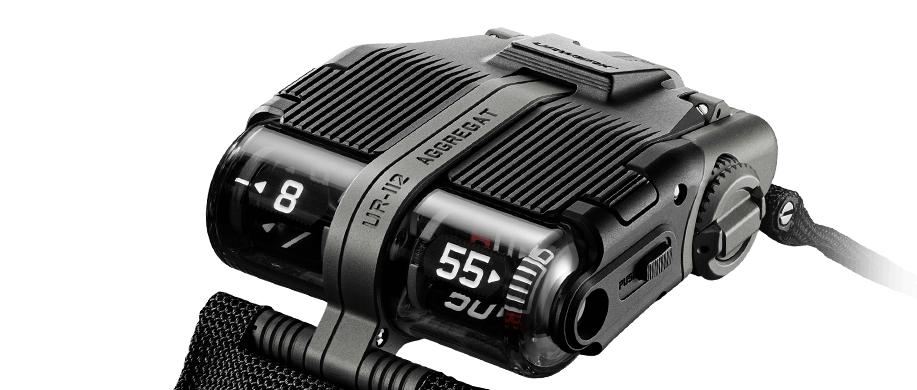

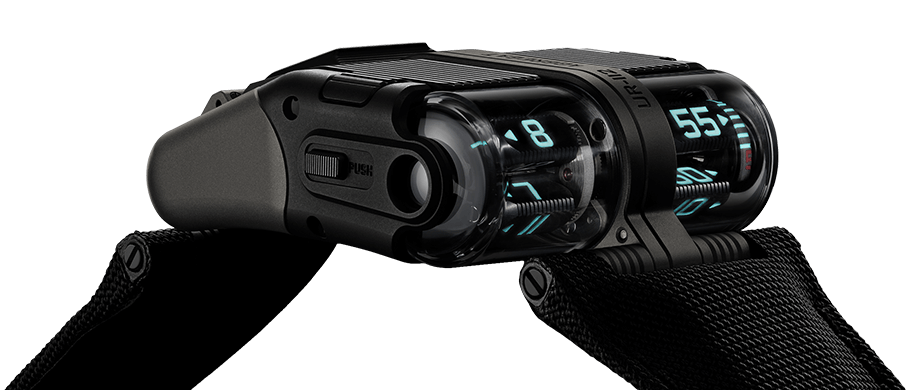














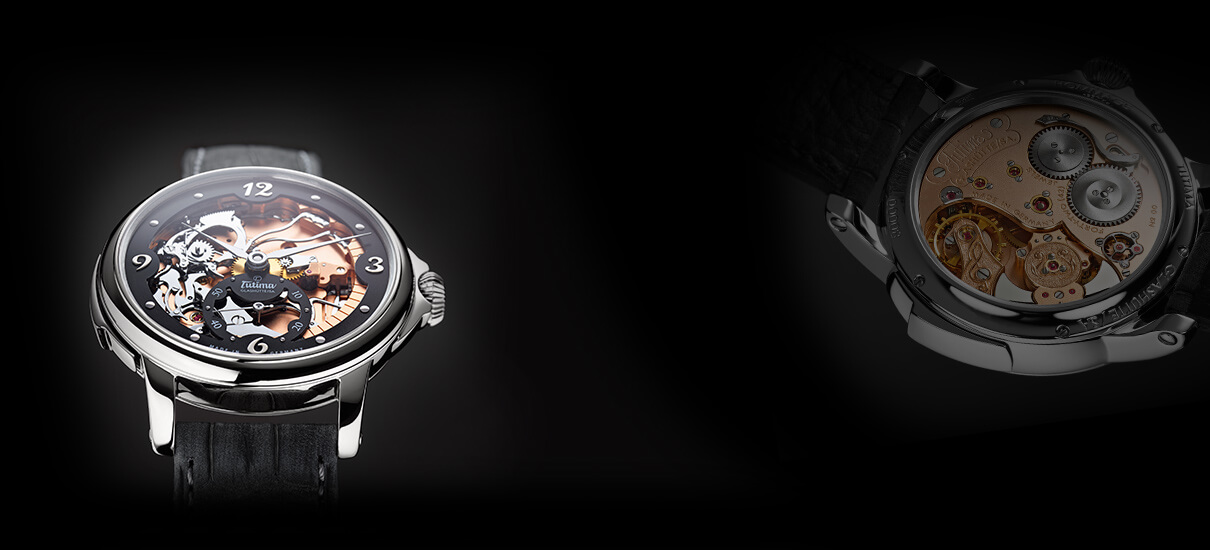



Leave a Reply
Want to join the discussion?Feel free to contribute!